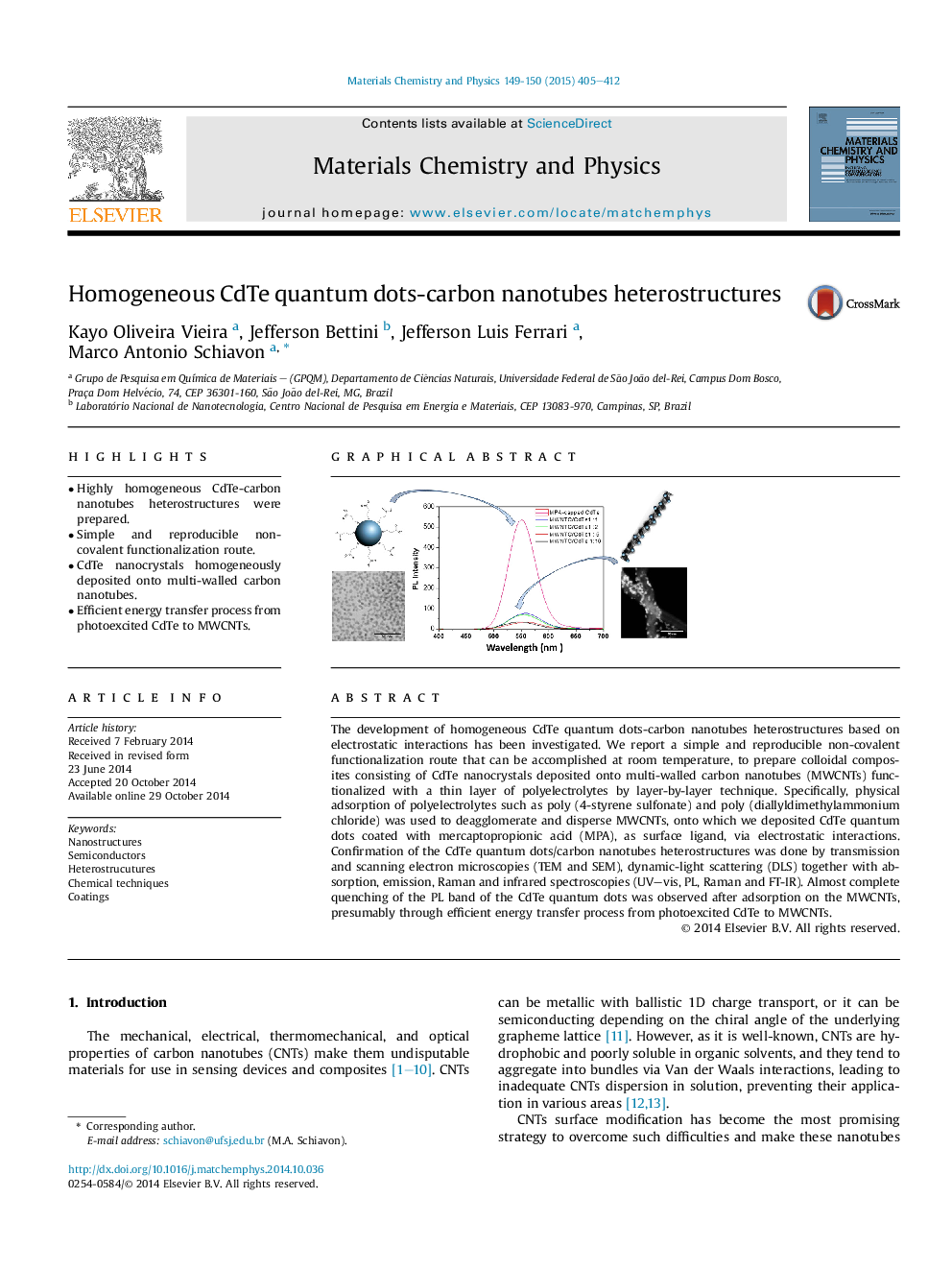| Article ID | Journal | Published Year | Pages | File Type |
|---|---|---|---|---|
| 1521433 | Materials Chemistry and Physics | 2015 | 8 Pages |
•Highly homogeneous CdTe-carbon nanotubes heterostructures were prepared.•Simple and reproducible non-covalent functionalization route.•CdTe nanocrystals homogeneously deposited onto multi-walled carbon nanotubes.•Efficient energy transfer process from photoexcited CdTe to MWCNTs.
The development of homogeneous CdTe quantum dots-carbon nanotubes heterostructures based on electrostatic interactions has been investigated. We report a simple and reproducible non-covalent functionalization route that can be accomplished at room temperature, to prepare colloidal composites consisting of CdTe nanocrystals deposited onto multi-walled carbon nanotubes (MWCNTs) functionalized with a thin layer of polyelectrolytes by layer-by-layer technique. Specifically, physical adsorption of polyelectrolytes such as poly (4-styrene sulfonate) and poly (diallyldimethylammonium chloride) was used to deagglomerate and disperse MWCNTs, onto which we deposited CdTe quantum dots coated with mercaptopropionic acid (MPA), as surface ligand, via electrostatic interactions. Confirmation of the CdTe quantum dots/carbon nanotubes heterostructures was done by transmission and scanning electron microscopies (TEM and SEM), dynamic-light scattering (DLS) together with absorption, emission, Raman and infrared spectroscopies (UV–vis, PL, Raman and FT-IR). Almost complete quenching of the PL band of the CdTe quantum dots was observed after adsorption on the MWCNTs, presumably through efficient energy transfer process from photoexcited CdTe to MWCNTs.
Graphical abstractFigure optionsDownload full-size imageDownload as PowerPoint slide
